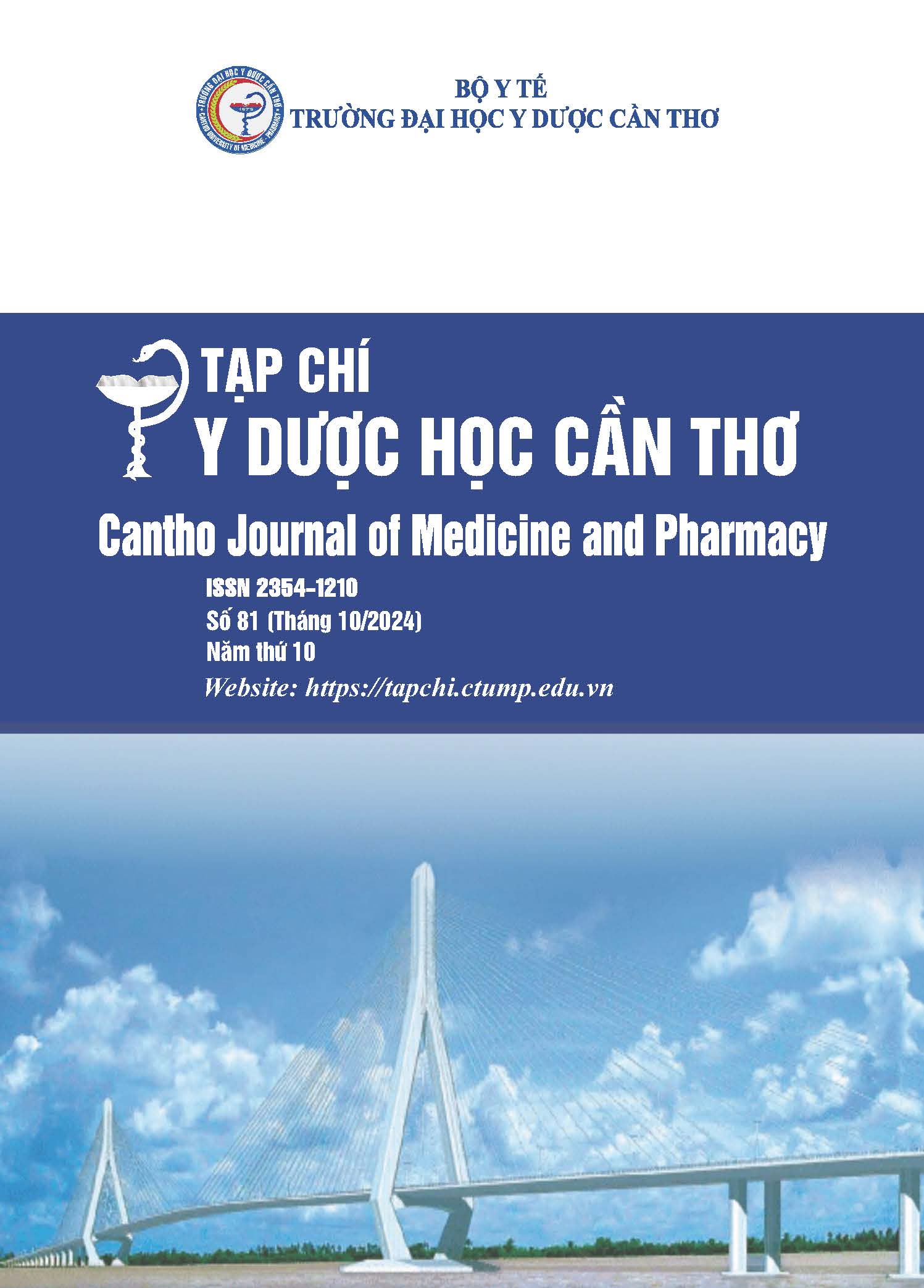STUDYING THE ROLE OF CADAVERIC DISSECTION IN TEACHING ANATOMY AT THE FACULTY OF MEDICINE NGUYEN TAT THANH UNIVERSITY
Main Article Content
Abstract
Background: Since ancient times, hands-on cadaveric dissection has been widely used as a practical teaching and learning method for anatomy education globally. Covid-19 has had a significant impact on anatomy teaching, with the transition from classroom to virtual learning. An important issue of anatomy teaching requires consideration of the role of cadaveric dissection practices in the post-COVID-19 era. Objective: To compare the difference in general anatomy and module anatomy exam results between a group of students who practice cadaveric dissection (K20) and a group of students who do not practice cadaveric dissection (K21). Material and methods: Crosssectional descriptive study on all General Medicine students of the 2020 and 2021 batch at the Faculty of Medicine - Nguyen Tat Thanh University. Results: The K20 class had a rate of 86.8% of general anatomy final exam scores, higher than the 60.11% of the K21 group. The anatomy module exam score of the K20 group was 4.7, statistically significantly higher than the 4.2 of the K21 group. Conclusion: Cadaveric dissection serves as an effective tool for enhancing students' understanding of anatomy. Medical schools should strategically integrate cadaveric dissection with other anatomy teaching methods to foster interaction and collaboration among students during the learning process.
Article Details
Keywords
Cadaveric dissection, anatomy, teaching
References
2. Smith C.F. and Mathias H. S. What impact does anatomy education have on clinical practice. Clin Anat. 2011. 24(1), 113-9, doi: 10.1002/ca.21065.
3. Iwanaga J. et al. A review of anatomy education during and after the COVID-19 pandemic: Revisiting traditional and modern methods to achieve future innovation. Clin Anat. 2021. 34(1), 108-114, doi: 10.1002/ca.23655.
4. Singal A., Bansal A. and Chaudhary P. Cadaverless anatomy: Darkness in the times of pandemic Covid-19. Morphologie. 2020. 104(346), 147-150, doi: 10.1016/j.morpho.2020.05.003.
5. Alsoufi A. et al. Impact of the COVID-19 pandemic on medical education: Medical students' knowledge, attitudes, and practices regarding electronic learning. PLoS One. 2020. 15(11), 2429, doi: 10.1371/journal.pone.0242905.
6. Onigbinde O.A. et al. The place of cadaveric dissection in post-COVID-19 anatomy education. Morphologie. 2021. 105(351), 259-266, doi: 10.1016/j.morpho.2020.12.004.
7. Huynh N. et al. Anatomy by Whole Body Dissection as an Elective: Student Outcomes. J Surg Educ. 2021. 78(2), 492-501, doi: 10.1016/j.jsurg.2020.07.041.
8. Tandon A. et al. Perceptions of medical students towards autopsy teaching and its significance. Medicine, Science and the Law. 2019. 59(3), 143-148, doi: 10.1177/0025802419855448.
9. Edussuriya D. et al. Perceptions of medical students on autopsy and its significance as a teachinglearning method. Sri Lanka Journal of Medicine. 2021. 30, 44, doi:10.4038/sljm.v30i1.235.
10. Williams S.R. et al. Prosection or Dissection: Which is Best for Teaching the Anatomy of the Hand and Foot. Anat Sci Educ. 2019. 12(2), 173-180, doi: 10.1002/ase.1808.
11. Anders S. et al. Autopsy in undergraduate medical education--what do students really learn? Int J Legal Med. 2014. 128(6), 1031-8, doi: 10.1007/s00414-014-0974-4.
12. Abdullah N.K. et al. The need for mandatory autopsy teaching in Forensic Medicine for medical students. Autops Case Rep. 2024. 14, 20-24, doi: 10.4322/acr.2024.509.
13. Barker T. et al. The role of cadaveric simulation in talus fracture research: A scoping review. Foot Ankle Surg. 2022. 28(8), 1177-1182, doi: 10.1016/j.fas.2022.06.005.
14. Pizzimenti M.A. et al. Dissection and dissection-associated required experiences improve student performance in gross anatomy: Differences among quartiles. Anat Sci Educ. 2016. 9(3), 238-46, doi: 10.1002/ase.1574.


